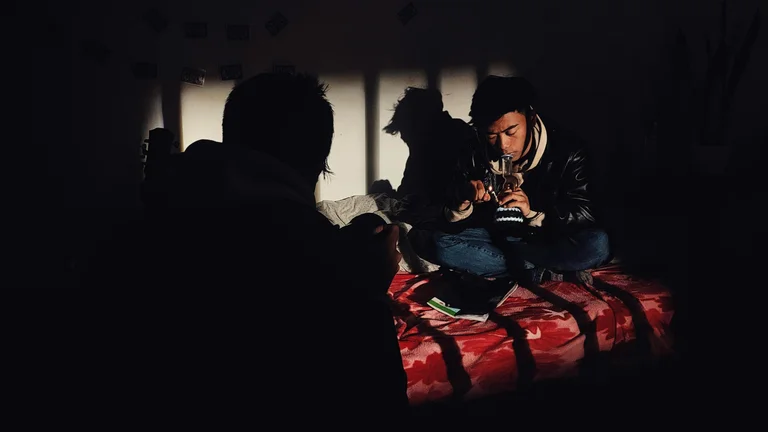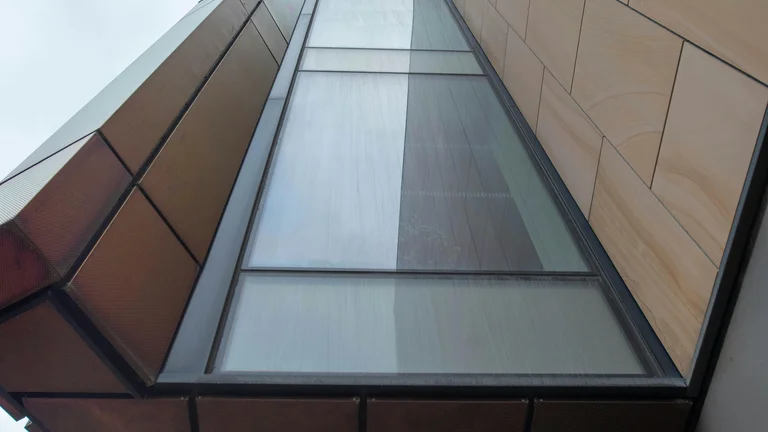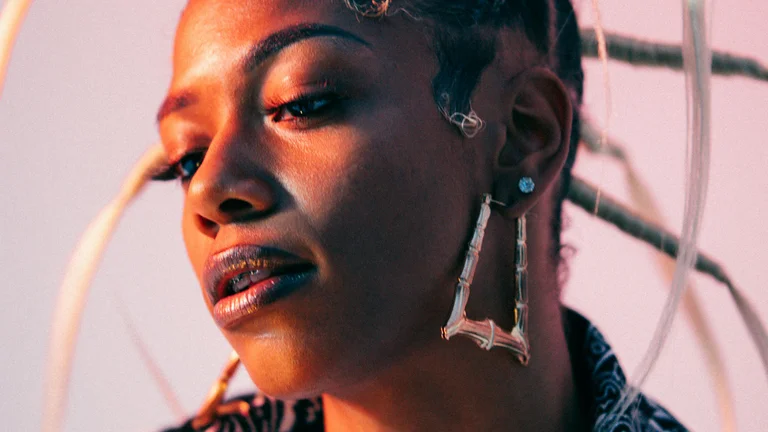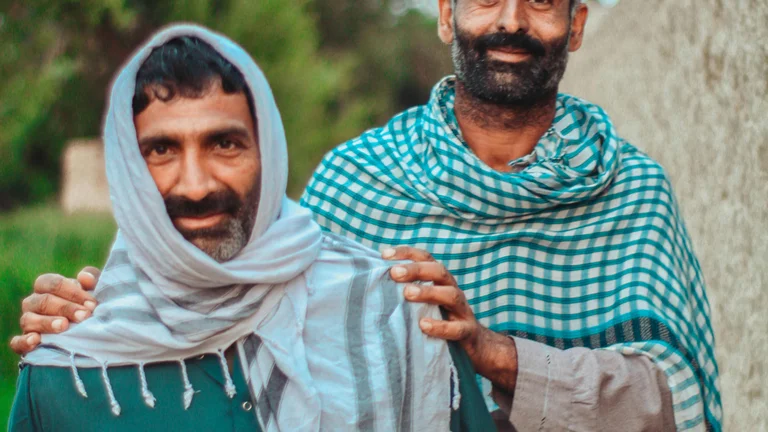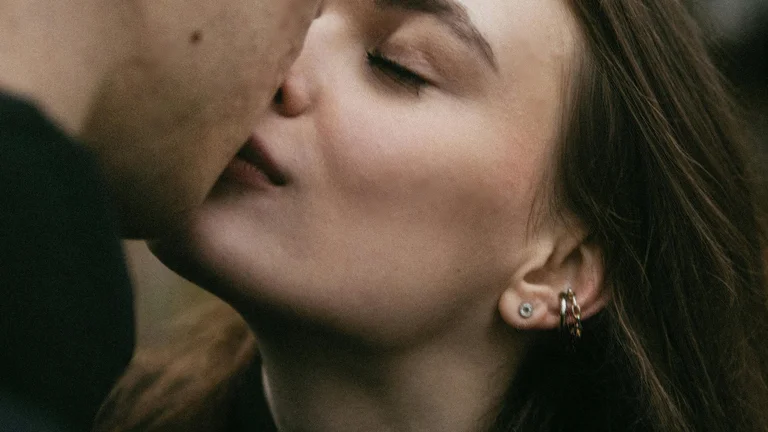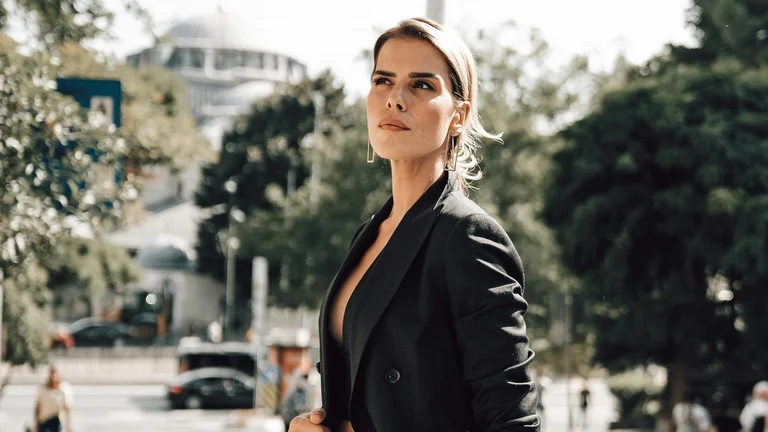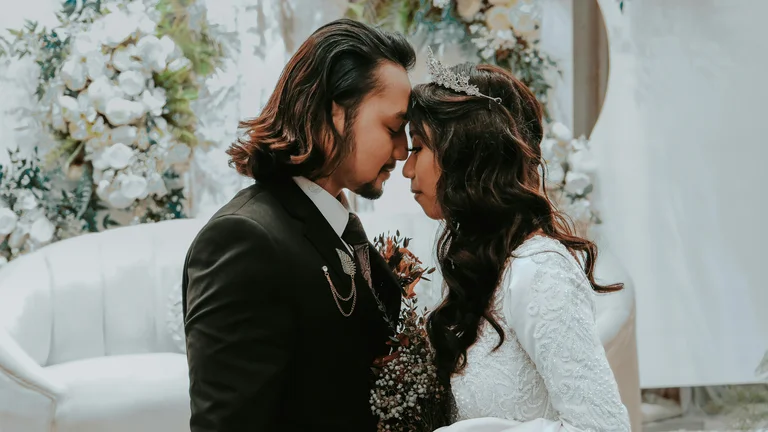
Asian drama weddings captivate audiences worldwide not only because of their romantic stories but largely due to the rich cultural traditions embedded in the wedding ceremonies displayed. These drama weddings often serve as vivid depictions of heritage, reflecting centuries-old customs, nuanced family dynamics, symbolisms, and societal values intrinsic to Asian cultures. Exploring these cultural traditions seen in Asian drama weddings offers a deep dive into the symbolic significance behind various rituals, clothing, ceremonies, and interpersonal behavior portrayed in these televised narratives.
One of the most noticeable aspects of Asian drama weddings is the intricate use of traditional wedding attires, often serving as visual representations of cultural identity. In Korean dramas, the hanbok worn during wedding ceremonies symbolizes purity and modesty, with the bride's hanbok typically in bright, auspicious colors such as red or pink, contrasted with the groom’s more subdued blues or greens. The layered garments with wide sleeves and long skirts highlight gracefulness and tradition. Brides sometimes wear a ceremonial coronet called jokduri or a more elaborate hwagwan, decorated with gold, silk embroidery, and jewels, emphasizing their status and beauty. These attires are not only decorative but hold cultural emphasis on virtue and respect.
In Chinese dramas, the traditional bridal attire is often the qipao or the two-piece cheongsam, typically in red, regarded as an auspicious color symbolizing luck, happiness, and prosperity. Sometimes, the bride may wear the elaborate fengguan xiapei, a phoenix coronet and embroidered robe, particularly for more traditional or formal weddings shown in historical contexts. The groom usually dons a matching changshan or mandarin gown. These costumes are steeped in symbolism: dragons and phoenixes embroidered on clothing represent the harmony of masculine and feminine forces. These details often appear in Chinese dramas to underscore cultural pride and nuanced meaning behind matrimonial rites.
Japanese drama weddings often contrast between Shinto traditional ceremonies and contemporary Christian-style weddings. Brides in traditional settings wear the white kimono called shiromuku, symbolizing purity and readiness to be ‘painted’ with her new family colors through marriage. The groom wears a formal black kimono called montsuki haori hakama. The Shinto ceremonies depicted in dramas include ritual purification, offerings to kami (deities), and the famous san-san-kudo sake-sharing ritual, which symbolizes the bonding of the couple and their families. Sometimes, dramas interweave the traditional and the modern, showing brideschange attires mid-ceremony from kimono to white gowns, illustrating the hybrid identity contemporary Japanese weddings hold.
Elaborate Rituals and Symbolic Acts
Asian wedding dramas meticulously showcase rituals that reinforce cultural values and social ties. One prevalent theme is the emphasis on family approval and union beyond the couple. For example, Korean drama weddings often portray the pyebaek ceremony, where the bride offers dates and chestnuts to the groom’s parents, symbolizing fertility and children. This ritual is weighted with respect and acknowledgment of the groom’s family lineage. The bride’s submissive gestures — bowing repeatedly, offering gifts — visually communicate respect, duty, and acceptance into the new family system.
Similarly, in Chinese dramas, the tea ceremony is an essential wedding ritual depicted with profound reverence. Here, the bride and groom serve tea to their elders as a sign of respect and gratitude. This act formally acknowledges the joining of two families and their shared responsibilities. Elders, in turn, bless the couple with red envelopes containing money or jewelry. The tea ceremony is a moment packed with emotion and tradition, often central to drama plotlines, symbolizing respect and continuity of family values.
Notably, the Japanese san-san-kudo ritual presents the couple sharing three sips each from three different cups of sake, totaling nine sips. This act carries deep symbolic meanings of unity, bonding, and sharing of joys and sorrows. The number three is considered sacred in Japanese culture, and the repetition reinforces the sacredness of marriage vows. These rituals emphasize marriage as more than a personal affair — a communal, spiritual, and social covenant.
Family Dynamics Expressed in Drama Weddings
Asian dramas often use wedding ceremonies as a stage to expose intricate family relationships, expectations, and conflicts. These occasions represent the culmination of longstanding familial negotiations. In many Korean dramas, the wedding process often involves subtle power plays between in-laws, reflecting Confucian values of filial piety, respect for elders, and patriarchy. Characters may face pressure to conform to family desires, showcasing the bride or groom’s struggle for autonomy against traditional expectations.
Chinese dramas frequently highlight the significance of parental blessings and the role of family hierarchy in weddings. Stories explore tensions when modern values clash with traditional demands, such as the insistence on marrying within a certain social class or adherence to ancestral customs. The tea ceremony scenes can reveal underlying family attitudes, alliances, and grudges, making the wedding a battleground for honor and acceptance.
Japanese wedding episodes often focus on the balance between individuality and family duty. These dramas display how newlyweds navigate relationships with extended family, especially in rural or orthodox settings where traditional gender roles continue strongly. Weddings in these dramas become symbolic for the characters' negotiation of identity, generational gaps, and social expectations.
Symbolism in Decorations and Venue Choices
The settings of weddings in Asian dramas feature elaborately chosen decorations imbued with cultural symbolism. Flowers, color themes, and venue selections reflect deep-rooted beliefs about luck, prosperity, and harmony. For instance, red is ubiquitously present in Chinese drama weddings, symbolizing fortune and joy, with decorations featuring red lanterns, embroidered fabric, and red paper cuttings. Peonies or lotus flowers are popular floral motifs that denote prosperity and purity. The venue might be a traditional courtyard house, a temple, or a modern hotel ballroom, each carrying distinct connotations.
Korean drama weddings often show the use of symbolic props such as wooden ducks (representing fidelity and lifelong partnership) and traditional wedding tables (pyebaek sang) laden with fruits and sweets, signifying abundance. The venues themselves, whether at ancestral homes or scenic outdoor locations, reflect a balance between old traditions and new aesthetics. Sometimes, dramatic positions of the families’ seating illustrate social rankings and respect.
In Japan, shrine weddings are visually distinct with minimalist elegance, featuring natural elements like pine branches and bamboo, which symbolize longevity and resilience. The color white in sacred spaces echoes purity and a fresh start. Lighting and spatial arrangement in these venues often enhance the solemnity of rituals. Modern wedding halls, increasingly common in dramas, showcase Western influences while integrating subtle traditional touches.
Contemporary Adaptations in Drama Weddings
Asian drama weddings frequently depict the evolving nature of tradition amid modernity. Many dramas portray young couples blending traditional rites with contemporary elements, reflecting real societal shifts. Brides might wear a traditional hanbok or qipao ceremony dress and then switch to a white wedding gown for a church or hotel reception. Similarly, the groom might don a tuxedo after initial traditional attire. These scenes highlight the negotiation between heritage preservation and personal preference.
The adoption of Western wedding customs such as exchanging rings, bridal veils, and formal receptions in ballrooms have increasingly been portrayed in dramas from Korea, China, and Japan. These hybrid weddings become a narrative device to illustrate generational divides or to soften cultural boundaries. Yet, dramas often preserve at least one traditional ceremony, signaling continued reverence for cultural origins.
The role of technology and social media in contemporary weddings also finds reflection in recent Asian dramas, where characters live-stream ceremonies or update relatives abroad via smartphones. This development mirrors real-life changes in how weddings are experienced and documented, demonstrating cultural adaptability.
Diverse Approaches to Marriage Proposals
Asian drama weddings frequently start with unique, symbolic marriage proposals that tie into cultural motifs. Korean dramas often show the groom presenting a traditional ring box or a gift wrapped in bojagi (traditional wrapping cloth), which adds sentimental value rooted in custom. The proposal may include meaningful gestures, such as planting a tree together or a heartfelt letter, evoking emotional depth tied to nature and expression of intent.
Chinese dramas feature proposals during festivals or family gatherings, reinforcing the importance of timing and community observation in engagement rites. The exchange of betrothal gifts, a deep-rooted custom, symbolizes serious commitment and is often narrated in the drama to underline themes of respect and alliance between families. The proposal scenes emphasize honor and planned futures rather than spontaneous declarations.
In Japanese dramas, proposals are mostly romantic yet may include traditional elements such as offering a small wrap of rice or a sacred item blessed at a shrine. These gestures highlight a spiritual dimension to the marriage commitment. The symbolism woven into proposals often foreshadows the type of wedding ceremony and the couple’s journey.
Comparative Table: Wedding Traditions Across Korean, Chinese, and Japanese Dramas
| Aspect | Korean Drama Weddings | Chinese Drama Weddings | Japanese Drama Weddings |
|---|---|---|---|
| Traditional Bride Attire | Hanbok with jokduri or hwagwan coronet | Qipao or fengguan xiapei robe | Shiromuku kimono |
| Groom Attire | Hanbok with subtle colors | Changshan or mandarin gown | Montsuki haori hakama |
| Key Rituals | Pyebaek (offering fruits to in-laws) | Tea Ceremony for elders | San-san-kudo sake sharing |
| Symbolic Colors | Bright, auspicious tones like red, pink | Red for prosperity and luck | White for purity |
| Typical Venue | Traditional house or modern hall | Home courtyards, temples, hotels | Shinto shrine or wedding hall |
| Family Role | Strong emphasis on respect, hierarchy | Parental blessings central | Balance of family duty and individuality |
Detailed List of Steps in a Traditional Korean Wedding Ceremony
- Preparation and Dressing: Bride and groom change into their respective hanboks; makeup and accessories like jokduri for the bride are finalized.
- Welcoming Guests: Family members and friends gather at the venue decorated with symbolic elements like wooden ducks and traditional tables.
- Greeting Ceremony: The bride and groom bow to their elders, showing respect and humility.
- Pyebaek Ceremony: Bride offers dates and chestnuts to groom's parents while bowing deeply, symbolizing fertility and respect.
- Exchanging Vows: Modern dramas often add this step to blend tradition with contemporary wedding customs.
- Celebration Reception: Family and friends share food, blessings are exchanged, and the couple might change into western-style wedding attire.
- Closing Rituals: The newlyweds thank their guests and elders formally to conclude the ceremony.
This list provides a clear framework of traditional Korean weddings as seen in dramas, though variations may occur depending on regional or modern influences.
Significance of Wedding Foods and Gifts Displayed in Dramas
Food and gift exchanges in wedding ceremonies depicted in Asian dramas carry multifaceted symbolism. Traditional wedding foods such as steamed rice cakes, dried fruits, nuts, and sweets signify prosperity, fertility, and happiness. For example, in Chinese dramas, foods like nian gao (glutinous rice cake) are standard because they symbolize growth and progress. In Korean dramas, sweet rice cakes such as tteok are common, believed to bring good luck and health. These foods are often elaborately prepared and arranged on a ceremonial table, becoming a visual highlight of wedding scenes.
Gift giving is another recurrent motif, often portraying valuable items such as heirloom jewelry, red envelopes known as hongbao in Chinese culture, or money gifted in ornate boxes. These gifts represent blessings for wealth, fertility, and family prosperity. Dramas may include exchanges of symbolic handcrafted items like woven cloth or plants, emphasizing longevity and nurturing. The careful presentation of gifts and foods on altar-like tables in the dramas reinforces respect, generosity, and intergenerational connections.
The Role of Music and Dance in Wedding Ceremonies
Traditional music and dance play important roles in wedding ceremonies depicted in Asian dramas, enhancing the emotional and cultural atmosphere. Korean weddings may feature pansori performances or the playing of traditional instruments like the gayageum during receptions or rituals, threading historical soundscapes with modern celebrations. Dance performances, often symbolic reenactments, appear in historic-set dramas, showcasing the graceful execution of court dances once prevalent in royal weddings.
In Chinese dramas, the use of traditional instruments such as the erhu and guzheng during the tea ceremony or receptions underlines solemnity and celebration. Lion dances or festive folk performances occasionally appear in village weddings, symbolizing warding off evil spirits and ensuring a joyous start for the couple. These elements add richness to the portrayal of matrimonial traditions by linking sound and movement to ritual meaning.
Japanese wedding scenes showcase the kagura dance performed by shrine maidens, believed to invite divine blessings. The upkeep of music and dance traditions in dramas shows a reverence for intangible cultural heritage, highlighting how these artistic expressions frame the wedding as a holistic life event.
Impact of Asian Drama Weddings on Global Perception of Culture
Asian drama weddings have significantly influenced global perceptions of Asian cultures by broadcasting nuanced portrayals of diverse matrimonial traditions. The popularity of K-dramas, C-dramas, and J-dramas worldwide creates cross-cultural interest, fostering appreciation and understanding. Elements such as traditional wedding attire, intricate ceremonies, and family-oriented values become educational tools for global audiences seeking authentic insights into Asian societies.
The dramatization often romanticizes and idealizes cultural practices, yet also brings attention to real societal challenges, such as generational conflicts, modernization pressures, and evolving gender roles, allowing viewers to see beyond stereotypes. Additionally, wedding sequences in dramas have inspired non-Asian individuals to incorporate Asian elements in their own ceremonies, boosting cultural exchange and fusion. The visibility of these traditions offers cultural pride and heritage preservation impetus for younger Asian generations globally.
The following table summarizes the key cultural contributions of Asian drama weddings to global audiences:
| Aspect | Global Impact |
|---|---|
| Traditional Attires | Increased global interest in hanbok, qipao, kimono for weddings and cultural fashion |
| Ritual Awareness | Educates audiences on ceremonies like tea ceremonies, pyebaek, and san-san-kudo |
| Family Values | Highlights importance of respect and filial piety in family relations |
| Modern-Traditional Blend | Shows how cultures balance origin and global influences in marriage rituals |
| Musical and Artistic Heritage | Introduces traditional music/dance forms linked to weddings |
Such impacts underline the role of Asian drama weddings as cultural ambassadors that magnify heritage appreciation internationally.
FAQ - Cultural Traditions Seen in Asian Drama Weddings
What traditional bridal attire is commonly seen in Korean drama weddings?
Korean drama weddings typically feature the bride wearing a hanbok, a traditional Korean dress, often in bright colors like red or pink. The bride may also wear a jokduri or hwagwan coronet, both decorative headpieces symbolizing purity and beauty.
Why is the tea ceremony important in Chinese drama weddings?
The tea ceremony in Chinese weddings is a symbolic ritual representing respect and gratitude towards the elders of both families. The bride and groom serve tea to their parents and relatives, marking the formal union of families and receiving blessings and gifts in return.
What is the significance of the san-san-kudo ritual in Japanese weddings shown in dramas?
The san-san-kudo is a traditional Japanese sake-sharing ritual where the bride and groom take three sips each from three cups, totaling nine sips. It symbolizes the binding of the couple and their families, representing unity, commitment, and the sacredness of marriage.
How do Asian dramas portray family dynamics during weddings?
Asian dramas often dramatize weddings as moments highlighting family negotiations, respect for elders, and sometimes conflicts between tradition and modernity. Weddings serve as stages where filial piety, family approval, and hierarchical relationships are emphasized and explored.
Are contemporary elements incorporated into traditional Asian drama weddings?
Yes, many Asian dramas depict weddings blending traditional rituals with modern customs, such as wearing Western-style wedding gowns or tuxedos, exchanging rings, or holding receptions in hotels, reflecting evolving cultural identities and societal changes.
Asian drama weddings vividly portray rich cultural traditions through symbolic attire, rituals like tea ceremonies and pyebaek, and intricate family dynamics, reflecting Korean, Chinese, and Japanese heritage. These dramatized weddings blend historical customs with modern elements, offering a deep, authentic insight into Asian matrimonial values and ceremonies.
Asian drama weddings richly illustrate cultural traditions that blend historical rituals, symbolic attire, and intricate family dynamics to create profound narratives. These ceremonies underscore respect for ancestry, societal values, and the evolving nature of marriage customs across Korea, China, and Japan. The detailed portrayals help global audiences appreciate the depth and beauty of Asian matrimonial heritage, ensuring these traditions continue to resonate amid modern life.

